15 Different Types of Lemon Trees (With Pictures)
-

- Last updated:
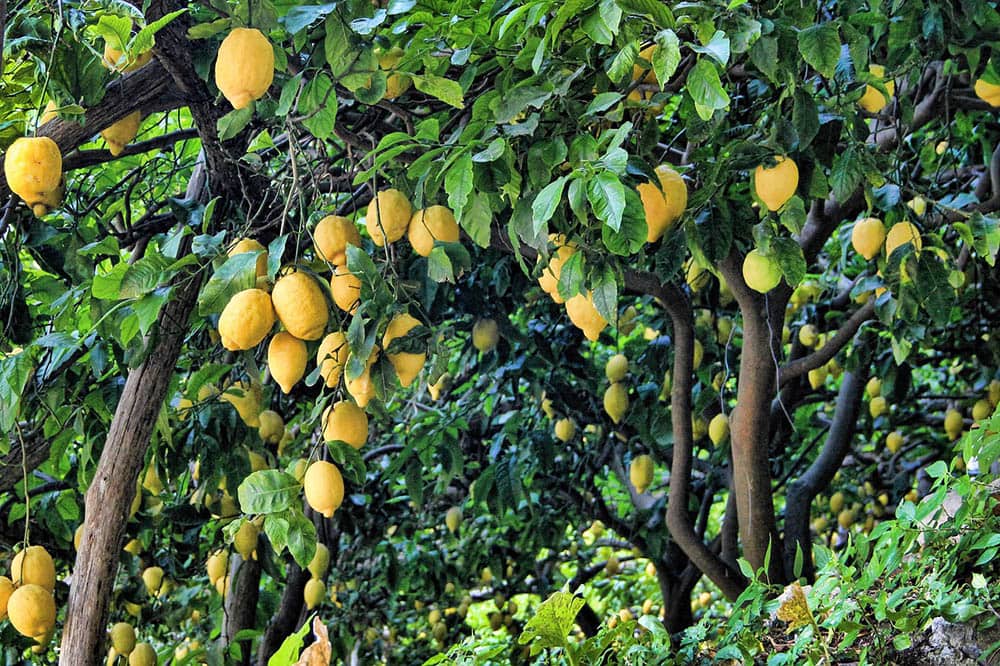
Lemon is a staple citrus fruit in many homes, restaurants, and bakeries. However, some people don’t understand how this sour gem grows and thrives. Before life gives you lemons, you need to have a lemon tree. Lemon trees are native to Asia and can survive up to a century. These incredible trees produce fruit all year, and a single tree can produce up to 600 pounds of lemon fruit yearly.
Besides the fruit, the leaves of a lemon tree are equally valuable for cooking. They are used to make tea and provide an extra layer of flavor to seafood and meats. In this article, you will learn about 15 types of lemon trees and some you probably didn’t know existed. Grab a glass of lemonade, and read on!
There are several varieties of lemon trees, and each one produces a distinct fruit. The fruits differ in size, shape, color, and contents. Interestingly, the sour fruits even differ in taste.
So, if you are shopping for suitable citrus trees for your home, reviewing these top 15 lemon trees will give you a good starting point.
The 15 Different Types of Lemon Tree
1. Verna Lemon Tree
Also known as Berna, the Verna lemon tree is one of Spain’s most popular trees. These trees grow rapidly and can reach heights of up to 20 feet. It is not commercially grown in the United States, but home gardeners are welcome to try and grow this unique lemon tree in their yards. You will fall in love with the sight and smell of the gorgeous fruits.
The Verna lemon tree is highly adaptable, making it ideal for colder climates. It is relatively large and takes an oval shape with a rather pronounced nipple. The fruit is bright yellow, has minimal seeds, and is very juicy. It also features a thick rind. Verna lemons are considered less suitable for commercial production due to their extremely rough texture. The trees are practically thornless and produce the main crop in late winter.
2. Eureka Lemon Tree
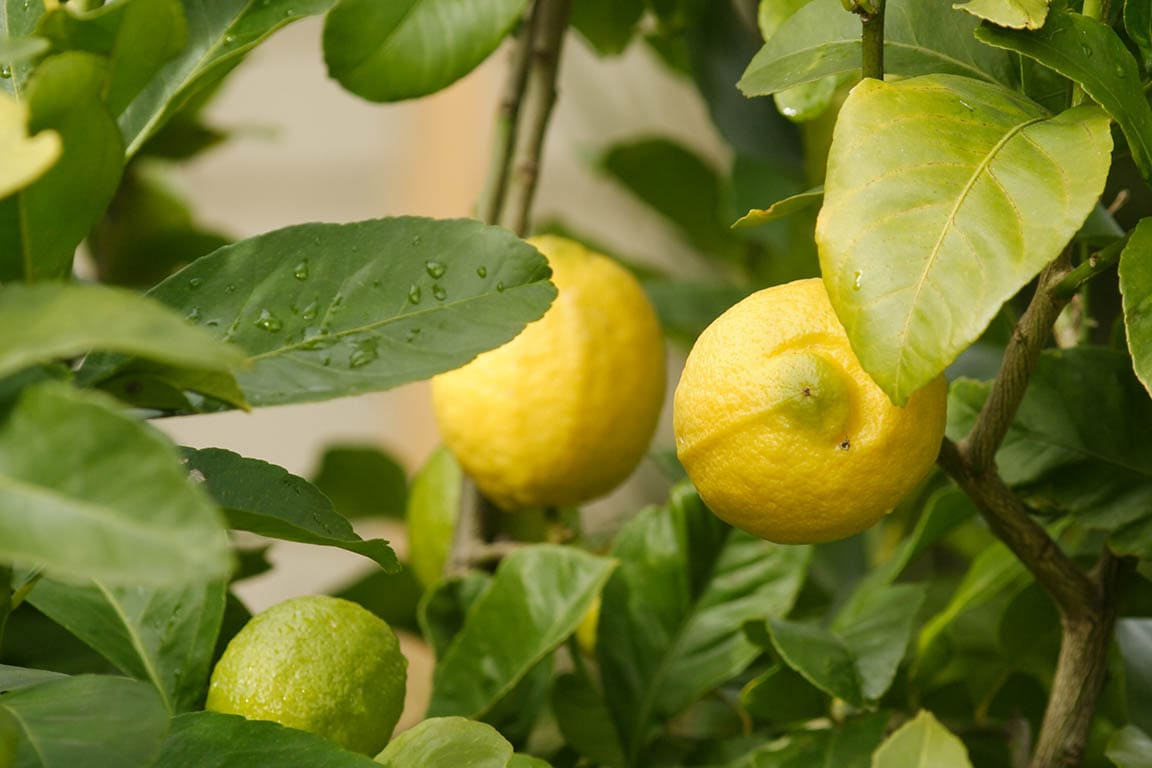
On average, a Eureka lemon tree can grow as high as 20 to 30 feet tall. That number may drop to between 8 and 10 feet with a dwarf variety. This tree may take up to 3 years to bear fruits, but it will be worth the wait once it does.
The Eureka lemon tree grows in an outstretched and open way and produces pink-fleshed lemon fruit all year round. The tree is virtually thornless and produces its fruits in terminal clusters at the edges of the branches with an oblong shape. The primary crop production takes place in winter.
The downside of Eureka lemon trees is that they don’t thrive in cold temperatures. You must protect the tree or move it indoors if temperatures drop below 20 degrees Fahrenheit or if you detect signs of harsh winds.
With that in mind, Eureka lemons are popular with commercial producers mainly because of their rich oil content, firm texture, and consistent taste. They are produced in huge quantities.
3. Avalon Lemon Tree
Native to Florida, the Avalon, or Avon, lemon trees can grow as high as 20 feet tall. They share many qualities with the Lisbon and Eureka varieties, and their fruit is widely sold in supermarkets as lemon juice concentrates.
The tree produces large yellow fruit with rough rinds. The fruit is ideal for juicing because of its liquid content and size. This tree requires access to full sun and moderate to heavy watering to thrive. If you are not in a warm or humid area, the Avalon lemon tree can still thrive in a greenhouse or indoor planter.
4. Variegated Pink Lemon Tree
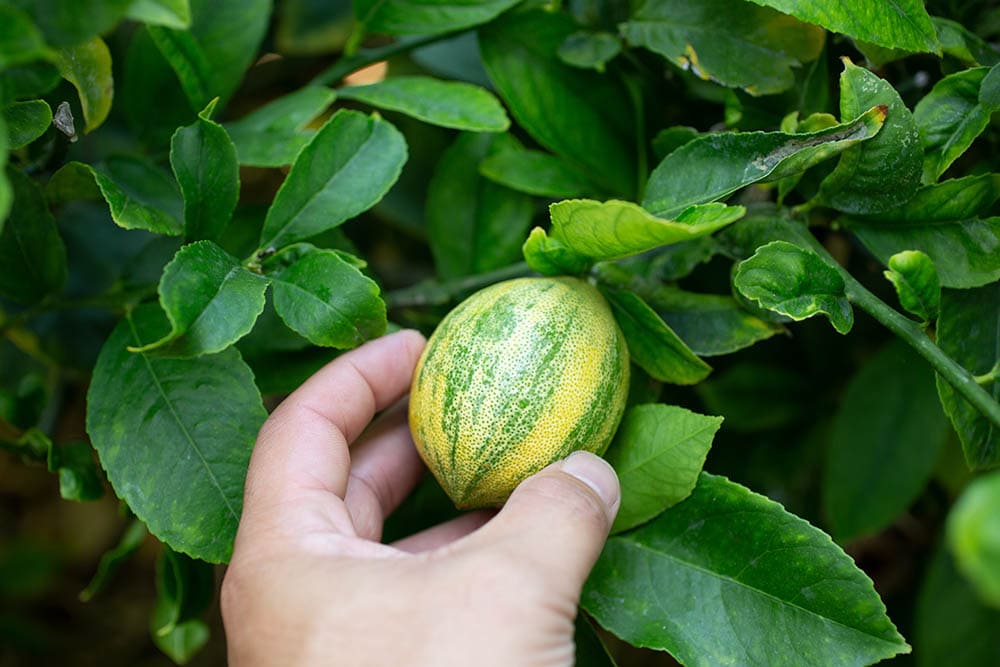
Also known as the Pink Lemonade tree, this lemon tree can rise to a height ranging from 10 to 15 feet and spread out to a width ranging from 11 to 15 feet. As the name states, the tree is identifiable for its variegated (multicolored) green and white leaves.
The lemon fruit produced is not yellow but pink. That means the lemon will have pink flesh with a green rind punctuated with yellow stripes. However, the stripes fade with ripening, and the fruit becomes more yellow. Although the fruit is pink, the juice is yellow.
The Pink Lemonade tree is rather thorny and produces round fruits that are widely spaced. So, expect some complications during harvesting. Variegated pink lemons are famous for their ornamental value, sweetness, and juice content. Compared to their sour counterparts, it is possible to devour them raw due to the mild lemon taste. The tree is also a favorite to most home gardeners for its beautiful foliage, hardiness, and low-maintenance nature.
5. Lisbon Lemon Tree
The Lisbon lemon tree traces its roots back to Australia. However, since reaching the USA, it has remained a staple citrus fruit for California lemon producers. In fact, it is among the most widely planted lemon tree varieties in the United States.
You can identify a Lisbon lemon tree from its extra-large size, thorny branches, and dense foliage that spreads out, forming a cool canopy. The canopy essentially acts as a protection layer for the fruits growing beneath it, especially against the wind.
The tree is more cold-tolerant than other varieties, and its main crop comes in winter. The lemon fruit produced is oblong-shaped, large, bright yellow, and extremely juicy and acidic. You have probably sampled this fruit already, as you can hardly miss it in your favorite grocery store.
6. Primofiori Lemon Tree
Commonly called the Fino lemon tree, the Primofiori tree is extensively planted in Spain. However, it is not commercially grown in the United States. The tree size can range from medium to large, with the height of a fully matured tree rising to 16 feet. The Primofiori lemon tree is mainly characterized by its thorny branches, broad width, and high pollen viability. The tree may take 2-3 years to start bearing fruit.
The fruit produced is oval-shaped, yellow, and has a smooth rind texture making it easy to peel. Its pulp is very juicy with high acidity levels. You do not want to eat raw fruit but can use it in baking and cooking.
This tree is also relatively hardy, surviving even in slightly colder climates. So, the absence of a tropical climate should not limit your home gardening ambitions.
7. Dorshapo Lemon Tree
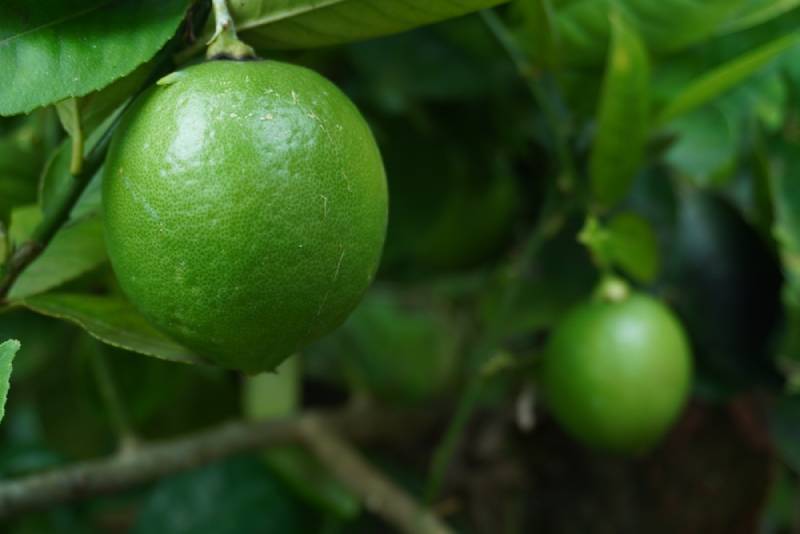
The Dorshapo lemon tree is a close relative of the Eureka variety. In the early 20th century, the variety was created by three US horticulturalists and has since become popular in many states.
The lemon fruit produced has a striking green skin and is often confused with lime. Contrary to many other lemon varieties, it comes with a mild, sweet flavor with very little acidic concentration, which makes it an excellent choice for snacking raw and juicing.
The Dorshapo lemon tree is best suited for warm and humid climates and does well in USDA growing zones 8 to 10. The tree demands exposure to full sun and moderate watering. Therefore, home gardeners in colder climates should consider growing it indoors.
8. Meyer Lemon Tree
This exotic lemon tree produces some of the sweetest fruit. Under the right conditions, the tree can grow between 6 and 10 feet tall. The dwarf variety ranges from 5 to 10 feet tall. The original tree was first grown in China but almost went extinct due to its high susceptibility to disease.
This led to a more disease-resistant variety that has withstood the test of time and is consumed to date. The Meyer lemon tree grows rapidly, and within 2 years, it should be ready for fruit production. The tree is almost thornless and produces its main crop in winter.
The lemon fruit produced is a hybrid of the Mandarin orange and lemon. Due to Mandarin oranges’ sweetness, Meyer lemons are relatively sweeter than other lemon varieties. They have a low acid content, smooth rind, are less elongated, and are bulkier than most varieties. The tree’s shiny dark leaves and white blossoms punctuated with a purple color are its most prominent features.
9. Ponderosa Lemon Tree
The Ponderosa lemon tree was first discovered in Maryland and is not a true lemon tree. It is a composite of citron and lemon. The tree takes significant time to grow, but it grows as tall as 24 feet once it does.
It is easily identified due to its elegant purple flowers and long, shiny, fragrant evergreen leaves. This tree is ideal mainly for ornamental functions, but that doesn’t negate its fruit value. The fruit is extra-large compared to common varieties and has a thick and irregular rind. Its flavor is not far from other lemons, and its juice content will leave you drooling.
The chief downside of the Ponderosa lemon tree is its low tolerance for colder climates. It is more suitable for tropical climates in Florida or California. You might want to consider growing the tree in a portable container and bracing yourself for its special growth requirements.
10. Volkamer Lemon Tree
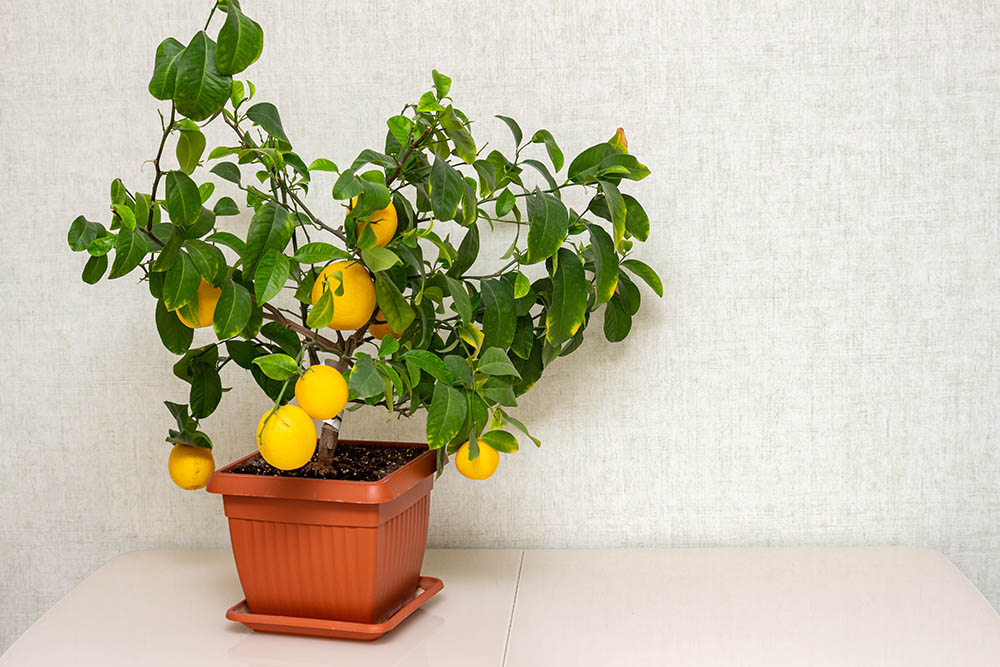
The Volkamer lemon tree is believed to be a native of Italy. It is a hybrid of a sour orange with a low acidic concentration and lemon. The tree can peak at a whopping 10 to 12 feet tall under the right conditions.
Owing to its orange composition, the fruit produced by this exotic tree has orange skin commonly mistaken for an orange fruit. The fruit size is relatively small and has a round shape. It has a distinct flavor that many people find pleasant, mainly due to its low acid content.
11. Genoa Lemon Tree
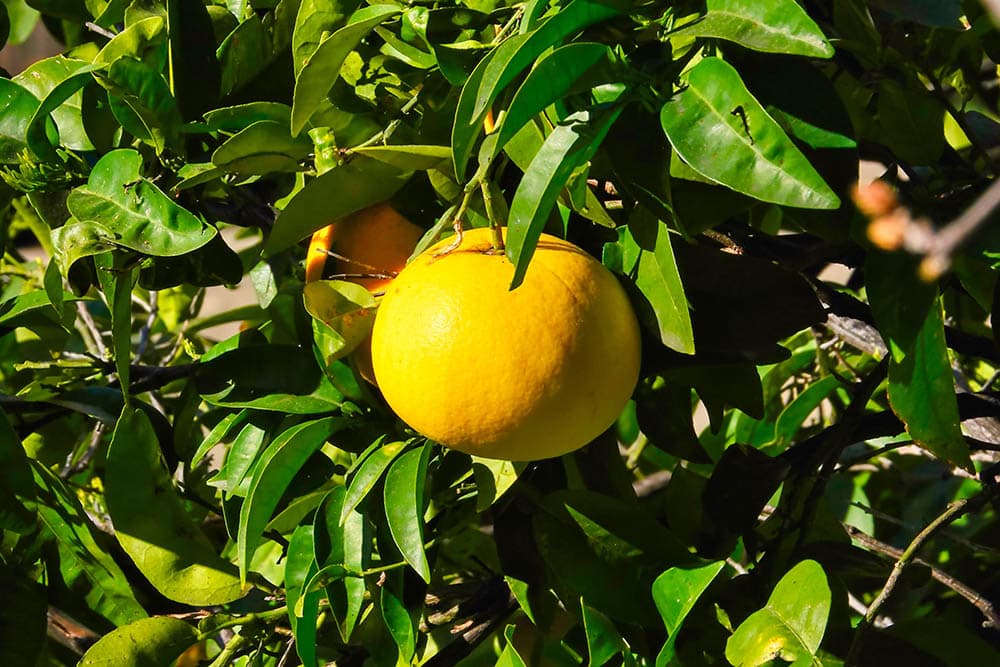
The Genoa lemon tree is an Italian native and more cold-hardy than most lemon tree varieties. It closely resembles the Eureka lemon tree but has fewer and much tinier thorns on its fruiting branches.
It also has denser foliage and grows as a shrub instead of a bush. That means it spreads out more than rises, making your harvest work easy. It is, therefore, most suitable for smaller gardens. Moreover, its dense foliage produces an ornamental bush that can provide an extra layer of elegance to beautiful home décor.
The medium-sized lemon fruit produced is known to ripen vigorously and must be picked promptly. It has an alluring appearance and takes up an ellipsoid shape with a protruding neck and nipple. It also has a fairly smooth rind, fewer seeds, and a high juice content.
12. Baboon Lemon Tree
The Baboon lemon tree originated in Brazil and generally thrives in a warm and humid climate. While it may be a relatively more heat-resistant citrus tree, it still needs significant watering to thrive in your home garden.
The fruit features a bright yellow skin and a rather sour taste, like a lime. It has relatively thick skin and is very juicy. Its pulp and rind are often used to make pasta and barbeque sauce.
13. Bearss Lemon Tree
A Bearss lemon tree is an excellent choice for your home garden if you want tarter lemons. The tree is a popular variety in the United States and is easily identifiable due to its vigorous growth, thornless branches, fresh and fragrant blossoms, and very juicy fruit with oily skins. It can grow up to 20 feet. The fruit produced also has relatively few seeds.
The Bearss lemon tree does well in semitropical regions but is very sensitive to cold. However, with special care, it can also survive colder climates. It is best to plant the tree in a portable pot so that when a freeze approaches, you can transfer it indoors.
14. Buddha’s Hand Lemon Tree
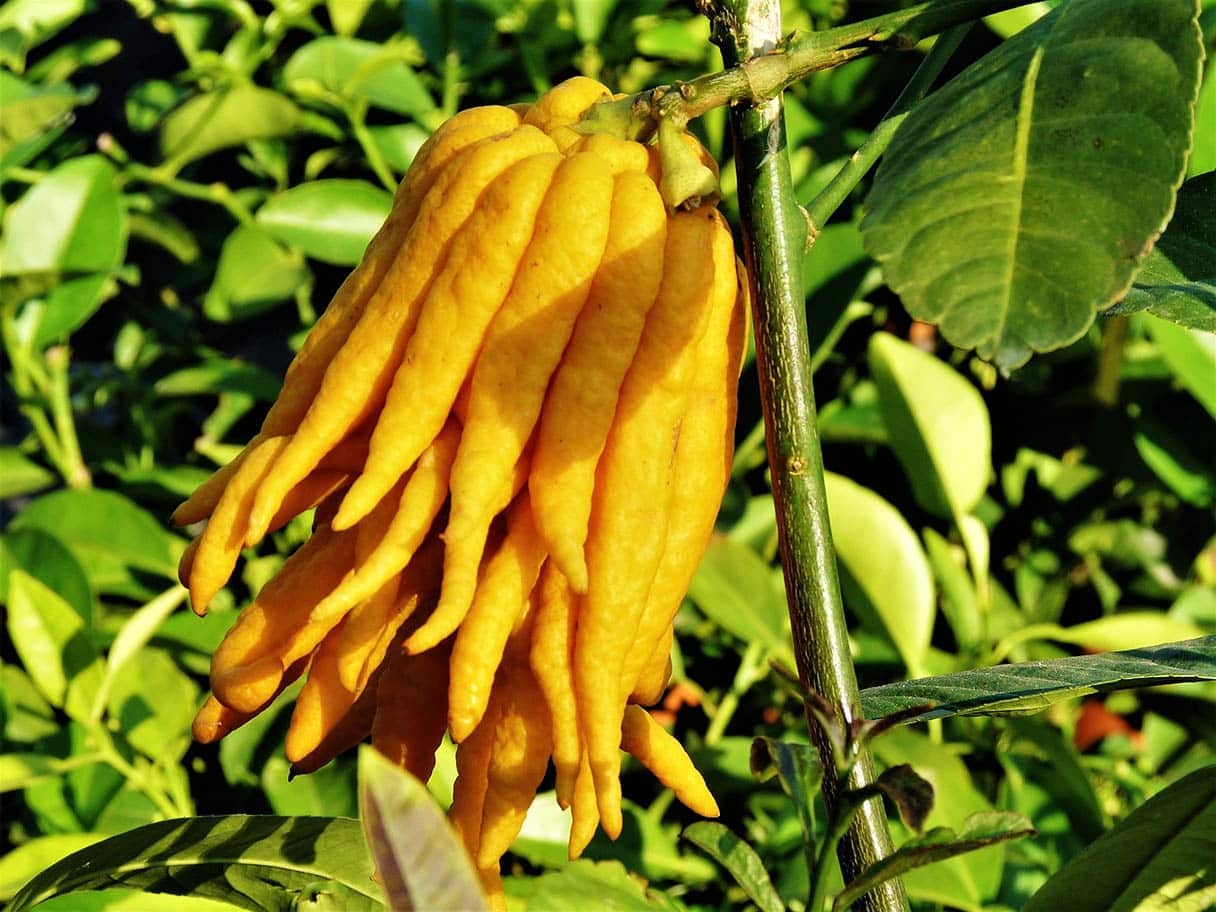
As strange as it sounds, this true lemon variety is native to the Himalayan region. The tree’s height ranges from 8 to 15 feet tall and has been widely grown in California since the 1980s.
As the name states, the fruit resembles a set of fingers or tentacles, making it one of the strangest looking of all lemon varieties. The fruit is highly fragrant, has a sweet rind, and doesn’t contain any seeds, pulp, or juice, making it ideal for cocktails and cooking.
15. Bush Lemon Tree
Also known as the Rough lemon tree, this hardy lemon tree is commonly used as a rootstock for more popular lemon cultivars. A Bush lemon tree takes the form of a small tree or large shrub that produces dense evergreen foliage.
Its leaves are green and glossy, and the white flowers guarantee an ever-sweet fragrance in your yard. The tree is commonly grown in Australia but has found its way to other parts of the world.
It is a low-maintenance tree, especially if you live in a frost-free region. The fruits produced are not smooth-surfaced but lumpy and thick-skinned. Even so, the skin is yellow and still produces enough juice.
Final thoughts
Lemon trees are ideal landscape trees and are fragrant and useful around the home. Moreover, they quickly adapt to potted life, making them an excellent choice for a houseplant. They are also low-maintenance plants.
Understanding the lemon tree varieties at your disposal will help you thoroughly master the growth conditions required and find the variety that best suits your needs. With a lemon tree by your side, you will never run out of flavorful lemon-based cuisines and beverages. Good luck finding the best tree!
- Related Read: 8 Tips on When and How to Prune Lemon Trees
Featured Image Credit: Pixabay
Contents

